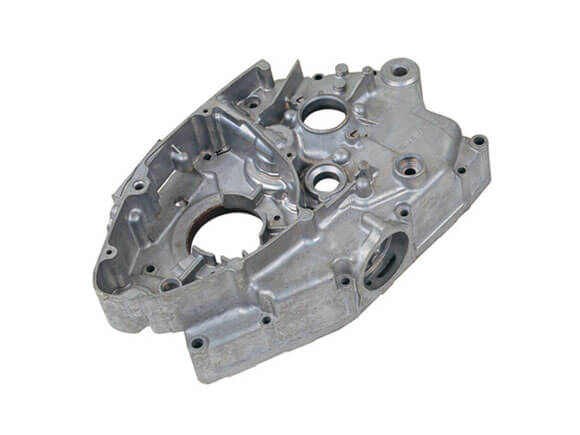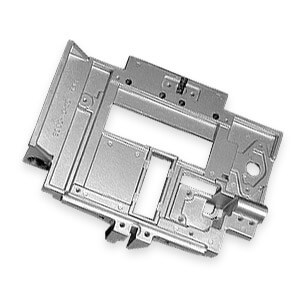Why an certified Aluminum Casting Company makes all the difference
Understanding the Significance of Light Weight Aluminum Spreading in Modern Manufacturing Processes
Aluminum casting has actually emerged as an essential element in modern manufacturing. Its light-weight and durable nature adds considerably to various sectors, from automotive to electronics. Additionally, improvements in casting techniques enhance production effectiveness and quality. As makers seek innovative services, the function of light weight aluminum spreading in sustainability comes to be increasingly essential. This conversation will certainly discover the multifaceted value of light weight aluminum casting and its ramifications for the future of manufacturing. What exists in advance in this developing landscape?
The Benefits of Light Weight Aluminum Spreading in Manufacturing
Aluminum casting deals various advantages that boost its charm in modern production processes. One significant benefit is its light-weight nature, which causes minimized power intake and improved fuel effectiveness in transport applications. In addition, aluminum's outstanding rust resistance expands the lifespan of actors items, making them a lot more sturdy in numerous settings. The material likewise promotes intricate geometries and intricate designs, allowing makers to create elements that meet accurate specifications.
On top of that, light weight aluminum casting flaunts a reasonably low melting point, which saves energy during the manufacturing procedure. This characteristic also makes it possible for fast cycle times, increasing general productivity. The recyclability of light weight aluminum contributes to sustainability initiatives, as recycled aluminum needs considerably less power to process contrasted to primary aluminum. Collectively, these benefits placement aluminum casting as an important strategy in contemporary manufacturing, accommodating the needs for efficiency, performance, and environmental obligation.

Applications of Aluminum Spreading Throughout Industries
While various products are used in production, aluminum spreading has actually come to be a critical method throughout multiple markets because of its convenience and performance. This process is extensively used in the automobile industry for producing lightweight engine blocks, transmission cases, and various elements that boost gas effectiveness. In the aerospace industry, light weight aluminum spreading is important for producing intricate parts that require high strength-to-weight ratios, adding to boosted aircraft performance.
In addition, the electronic devices industry counts on aluminum castings for heat sinks and housings, where thermal management is important for device longevity. The building industry also gains from light weight aluminum spreading in the type of architectural elements and structural elements that incorporate aesthetic appeal with sturdiness. Furthermore, the durable goods industry utilizes aluminum spreadings for kitchenware and sporting devices, leveraging the product's superb rust resistance and visual coating. Generally, aluminum spreading functions as a cornerstone in contemporary manufacturing, supporting varied applications throughout numerous fields.
The Function of Aluminum Spreading in Sustainability
Sustainability has actually become a prime focus in making methods, and aluminum spreading plays a vital function in advertising eco-friendly remedies. The procedure of light weight aluminum casting is inherently lasting because of the material's recyclability. Light weight aluminum can be recycled multiple times without losing its homes, significantly reducing power consumption and raw product demands. This recycling procedure consumes just about 5% of the power required for main light weight aluminum manufacturing, resulting in a remarkable reduction in carbon emissions.
Aluminum casting promotes the production of lightweight components, which add to power effectiveness in different applications, especially in the aerospace look at this now and automobile markets - aluminum casting. Lighter vehicles consume much less gas, further reducing ecological impact. In addition, innovations in casting methods are optimizing product usage, reducing waste in producing processes. As sectors seek to line up with sustainability goals, light weight aluminum casting becomes a feasible solution, sustaining a circular economic climate and fostering accountable manufacturing techniques
Technological Developments in Aluminum Casting Techniques
As markets develop, the adoption of ingenious innovations in light weight aluminum spreading strategies has actually changed making procedures. The combination of computer-aided layout (CAD) and computer-aided manufacturing (CAMERA) systems boosts accuracy and effectiveness, permitting complex geometries that were previously testing to generate. Advanced melting and spreading methods, such as die casting and investment casting, have actually boosted the top quality of aluminum parts, reducing problems and minimizing waste. Additionally, the introduction of automated systems and robotics in casting operations has streamlined operations and raised productivity. These improvements additionally enable real-time monitoring and data analytics, promoting much better decision-making and high quality control. In addition, the advancement of new alloys and warmth treatment processes has actually expanded the performance capabilities of cast aluminum products. Collectively, these technological innovations not just maximize manufacturing performance however also add to the sustainability of light weight aluminum casting in contemporary production.
Future Patterns in Aluminum Spreading and Its Effect On Innovation
Arising fads in light weight aluminum spreading are poised to improve the production landscape, driving development throughout various sectors. One considerable fad is the combination of innovative automation and robotics, which enhances accuracy and effectiveness in manufacturing processes. Furthermore, the rise of additive manufacturing methods is enabling for a lot more complicated designs, lowering product waste and production time. As sustainability becomes a top priority, the sector's concentrate on recycling light weight aluminum and making use of environment-friendly practices is anticipated to expand, lining up with global ecological goals.
Furthermore, the advancement of clever casting modern technologies, consisting of real-time tracking and data analytics, is readied to boost quality assurance and operational effectiveness. These innovations will certainly facilitate the manufacturing of lighter, more powerful, and a lot more long lasting aluminum elements, dealing with sectors such as auto and aerospace. Ultimately, these patterns will not just optimize producing procedures however likewise influence brand-new applications of light weight aluminum casting, promoting a culture of development and versatility out there.
Often Asked Concerns
What Is the History of Aluminum Spreading in Production?

How Does Light Weight Aluminum Casting Compare to Other Metals?
Aluminum casting offers advantages such as lightweight homes and corrosion resistance contrasted to various other metals. Precision aluminum casting. It helps with complex forms and boosts power effectiveness, making it a recommended option in various production applications over larger choices like steel or iron
What Are the Usual Flaws in Aluminum Casting?
Usual issues in light weight aluminum Web Site casting include porosity, shrinkage, misruns, and additions. These concerns can emerge from improper putting strategies, poor mold layout, or polluted products, leading to decreased structural stability and performance of the end product.
Exactly how Is the High Quality of Light Weight Aluminum Castings Tested?
The quality of light weight aluminum castings is evaluated with techniques such as visual examinations, dimensional dimensions, non-destructive screening methods, and mechanical property analyses, making certain that they fulfill defined requirements for efficiency and structural integrity.

What Are the Precaution in Aluminum Spreading Processes?
Safety and security procedures in aluminum casting procedures consist of making use of individual safety devices, proper air flow systems, normal tools upkeep, training employees on hazards, and executing stringent emergency methods to reduce threats connected with high temperature levels and liquified metal.
The recyclability of light weight aluminum contributes to sustainability efforts, as recycled aluminum needs substantially less energy to process compared to main aluminum. While various products are utilized in manufacturing, aluminum spreading has actually ended up being a pivotal technique throughout several industries due to its adaptability and performance. Advanced melting and casting approaches, such as die casting and financial investment spreading, have boosted the quality of light weight aluminum components, reducing and decreasing problems waste. Arising patterns in aluminum spreading are positioned to improve the production landscape, driving innovation across different industries. Light weight aluminum spreading has actually advanced given that the late 19th century, originally creating with the intro of aluminum as a light-weight metal.